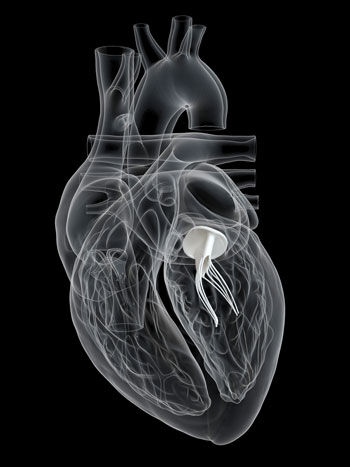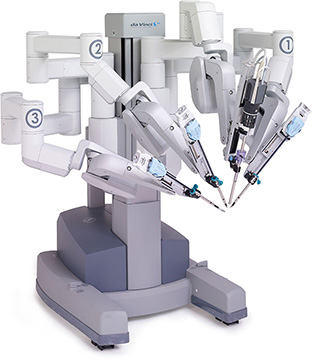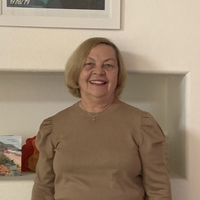Surgeon Insights: Top 3 Innovations for Mitral Valve Repair During Past 20 Years
Written By: Allison DeMajistre, BSN, RN, CCRN
Medical Expert: Dr. Vinay Badhwar, Executive Chair at West Virginia Heart & Vascular Institute
Reviewed By: Adam Pick, Patient Advocate & Author
Published: August 2, 2023
According to the American College of Cardiology, an estimated four million people in the United States suffer from some form of mitral valve disease. Several conditions may affect the mitral valve, including obstruction (stenosis), leakage (regurgitation), and bulging backward as the valve closes (prolapse). Patients with mitral valve disease may experience fatigue, chest pain, dizziness, and palpitations. Some people may have no symptoms, making it a silent and progressive disease that can result in premature death without a timely diagnosis. Fortunately, minimally invasive procedures have been developed to repair the mitral valve, allowing patients to return to the normal, fulfilling life they had before mitral valve disease.
To learn more about the “Top 3 Innovations” for mitral valve repair, we met with Dr. Vinay Badhwar, Executive Chair at WVU Heart and Vascular Institute, while attending the Mitral Conclave in New York City. Dr. Badhwar is a minimally-invasive specialist who has performed thousands of mitral valve surgeries over the past 20 years.
Key Learnings About The Top 3 Innovations for Mitral Valve Repair
Here are key insights shared by Dr. Badhwar during our interview:
Safety and Success Rate
- Repair of mitral valve prolapse, or a “floppy” mitral valve, has become an extremely safe operation, with at least a 90% success rate regardless of where the repair is performed. Dr. Badhwar told us, “We now know, in a recent analysis of The Society of Thoracic Surgeons’ National Data Base, in looking at 50,000 patients with recent repairs just for the floppy mitral valve, the operative risk of dying is less than 1%. So, it is exceedingly safe, and the repair rates are exceedingly high.”
- Dr. Badhwar believes the most important aspect for patients and family members to take home is the safety and success rate over the past 20 years. “I think that is a testament to the education we’ve done over the last 20 years to help surgeons on the technical aspects of how to reconstruct and repair valves instead of replacing them and how to do it safely,” said Dr. Badhwar.
 Illustration of Mitral Valve
Illustration of Mitral Valve
Minimally Invasive Robotic Valve Repair
- Mitral valve surgery used to require a large incision in the chest and was a significantly invasive surgery. Now, up to 15% of all mitral valve repairs in the United States are done robotically, and the only time a patient needs a large incision in their chest is if they need more extensive surgery besides the mitral valve repair. Dr. Badhwar states, “The repair is done through a tiny incision on the right side called the ‘Port Access’ and is about three centimeters or less. No bones are broken. At WVU Heart & Vascular Institute, the routine approach is done robotically, and our repair rate for these patients is 100%.”

Mitral valve repair, rhythm abnormalities, and more
- Robotic procedures aren’t limited to just the mitral valve. Many people have a leaky or blocked aortic valve, and they also can be treated with a minimally invasive robotic procedure. “Since 2020, we’ve been doing robotic aortic valve replacements and even recently aortic valve repairs. So, I think we’re shifting the era of “Coumadin-free” or no anticoagulation therapies to reconstruct patients’ valves, starting with the mitral but also treating rhythm abnormalities and other valves, including the aortic valve,” said Dr. Badhwar.
- Dr. Badhwar believes we are moving towards an exciting time for valve repair. “It’s an important New Era as we miniaturize care with minimal trauma and fast turnaround,” said Dr. Badhwar. “Patients can go back to their normal everyday lives with their families in the shortest period of time. Most importantly is to have the durability of the reconstruction for the only operation they need for the rest of their life.”
- Eliminating the need for ongoing Coumadin therapy and providing the durability of a valve repair rather than replacement assures patients that their life expectancy reverts back to before their valve disease. Dr. Badhwar said, “We now have evidence that once the valve is repaired and repaired well in a durable fashion, people’s life expectance essentially returns to the normal population, particularly for mitral valve repair.”
Thanks, Dr. Badhwar and the West Virginia University Heart & Vascular Institute!
On behalf of our patient community, many thanks to Dr. Vinay Badhwar for sharing his knowledge and expertise about the exciting innovations in mitral valve repair. Also, we want to thank WVU Heart and Vascular Institute for continuing to take great care of heart valve patients.
Related Links:
- See Dr. Vinay Badhwar’s Interactive Surgeon Profile
- Video: Advantages of Robotic Mitral Valve Repair
- Heart Valve Innovations: Robotic Aortic Valve Replacement Surgery
Keep on tickin!
Adam
P.S. For the deaf and hard of hearing members of our community, I have provided a written transcript of this interview below.
Video Transcript:
Adam Pick: Hi, everybody, it’s Adam with heartvalvesurgery.com. We are at the Mitral Conclave Conference in New York City. I’m thrilled to be joined by Dr. Vinay Badhwar, who is the executive chair at WVU Heart & Vascular Institute. Dr. Badhwar, it is great to see you again.
Dr. Badhwar: Hello, good to see you.
Adam Pick: Yes, we’re learning all these great things here at the Mitral Conclave. You have performed thousands of mitral valve surgeries. I’m curious to know, over your career which goes back 20 years, what has been the most profound advances in mitral valve therapy during your career?
Dr. Badhwar: Well, Adam, I think – I would say there’s probably three main areas where we’ve really advanced. First, particularly for the patients, is that on a grand scheme, repair of degenerative mitral valve disease or mitral valve prolapse or floppy mitral valve has become a very safe operation. With the proficiency in the United States now, the repair rate, regardless of where one goes for therapy, are in the 90% range.
We now know, on a recent analysis of the – what’s called the Thoracic Surgeons National Database, that in looking at 50,000 patients recently performed just for the floppy mitral valve disease – which we didn’t really have the fidelity of the data before to really do that on a big scale, we did just recently publish it just a couple of months ago. That was over 50,000 patients. The risk, the operative risk of dying – because when you’re a patient, you’re going in for heart surgery, you want to know what’s your risk of coming out of it. It’s less than 1% risk of dying. It’s exceedingly safe. The repair rates are exceedingly high.
I think that’s a testament to our societal education we’ve done over the last 20 years to really help with surgeons and understanding not just for patients, but providers, cardiologists but also surgeons on the technical aspects of how to reconstruct and repair valves instead of replacing them and how to do it safely. That’s the most important thing for a patient or a family member to take home.
The second is, now, once you’re good at proficiently repairing the valves or come from a center that does a lot of them, then what’s next? Well, I don’t think many patients want to continue to have this done through the front. In our center and many others now, up to 14 to 15% of all mitral repairs done in the United States are done robotically. That’s done through a tiny little incision on the right side called port access or a tiny little incision, really literally about 3 centimeters or less. There’s really no tissues – no bones are broken, nothing like that. In our site, we not only do this as a routine – in fact, no one actually gets an incision in their chest unless they need something else done. It’s the routine approach to do it robotically. Our repair rate is essentially 100% for these patients.
Now, that said, what’s next after that? Well, sometimes patients that come for mitral valve surgery also need something else. Many of them have atrial fibrillation, or they have a leaky tricuspid valve or something else. All of that can be done now robotically. Patients can get all of their things treated, including acurative intent for the treatment of atrial fibrillation which is quite common associated with mitral valve disease.
I’d say the third and last little point I’d make is that many patients also have other elements that they present with. They have a leaky aortic valve, or they have a blocked aortic valve. I know you know a lot about that and many of your patients also ask questions about the aortic valve. Through this robotic platform and – since 2020, we’ve been doing robotic aortic valve replacements and even recently, aortic valve repairs all done robotically. I think we’re shifting the era of Coumadin-free or no anti-coagulation therapies to really reconstruct patients’ valves, starting with the mitral, but also treating rhythm abnormalities and other valves including the aortic valve.
It’s a very exciting and important new era as we miniaturize care, minimal trauma, fast turnaround, back to – going back to their normal, everyday lives and with their families in the shortest period of time. Most importantly is to have the durability of the reconstruction, hopefully, for the only operation they’ll need for the rest of their life.
Adam Pick: With that durability, you don’t have the ongoing Coumadin. Correct me if I’m wrong, but you also get that normality of life expectancy. Is that right?
Dr. Badhwar: Absolutely, we now have lots of evidence that once the valve is repaired, and repaired well in a durable fashion, that people’s life expectancy essentially returns to the normal population, particularly for mitral valve repair.
Adam Pick: Dr. Badhwar, I don’t know if you saw my face through a lot of wows and awes going on there. I can’t thank you enough, you and the entire team at WVU Heart & Vascular Institute. They are in Morgantown in West Virginia. Dr. Badhwar, thanks for all the innovations, all the great things you’re doing. Thanks for being here with me.






